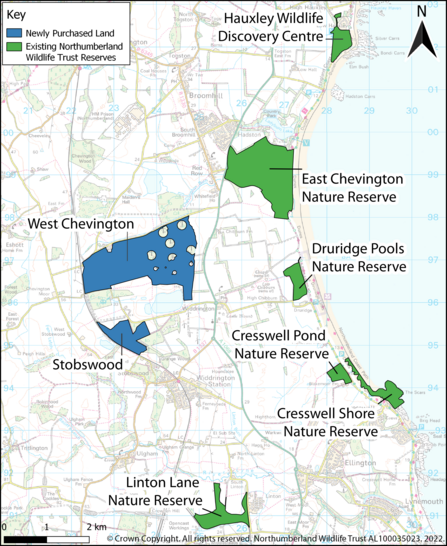The large site at West Chevington near Druridge Bay was acquired from regeneration specialist Harworth Group plc. It sits atop a former opencast coalmine, like many of Northumberland Wildlife Trust’s existing reserves in the area, and will showcase how nature can recover in this manufactured landscape.
The new land at West Chevington will provide opportunities to explore the rewilding concept further, and to work across a much larger scale. It will become a game changer for nature recovery, and will be one of the most ambitious lowland rewilding projects in the north of England, forming an integral part of the wildlife charity’s fight against global warming.
Close to a number of the wildlife charity’s nature reserves, the West Chevington land, which is near to Amble, Morpeth, and Ashington, will allow conservationists to test a number of rewilding methods with the aim of storing carbon, boosting biodiversity and connecting wildlife habitat on an unprecedented scale locally. They will restore natural processes to reduce climate change impacts and encourage people to become more engaged with their natural heritage and take action for nature and climate.




